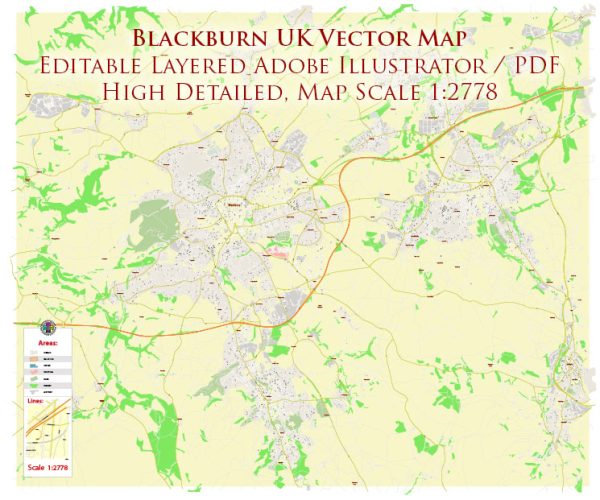Blackburn, a town located in Lancashire, England, has a rich history of urban development that spans several centuries. Here is a brief description of the history of urban development in Blackburn:
- Medieval Origins: Blackburn’s history can be traced back to medieval times, with the first recorded mention of the town dating to the Domesday Book of 1086. In the Middle Ages, Blackburn was a market town and a center for wool and cloth production.
- Industrial Revolution: The late 18th and 19th centuries brought significant changes to Blackburn as it became a hub of the Industrial Revolution. The town’s textile industry boomed, and cotton mills sprang up, leading to a population explosion. Blackburn became known for its cotton spinning and weaving industries, and it played a crucial role in the cotton trade.
- Urban Growth: As the textile industry thrived, the town’s population continued to grow. This rapid urbanization led to the construction of factories, workers’ housing, and industrial infrastructure. The landscape of Blackburn transformed as it became an industrial and manufacturing center.
- Civic Development: In the 19th century, Blackburn saw the establishment of various civic amenities, including parks, libraries, and educational institutions. The town’s railway connections improved, facilitating transportation and trade.
- Architecture: The architectural landscape of Blackburn reflects its historical development. You can find a mix of Victorian and Edwardian architecture, including grand public buildings, terraced housing, and industrial structures, which provide a glimpse into the town’s industrial past.
- Diversification of Industry: While textiles were the primary industry in Blackburn during the 19th century, the town diversified its industrial base in the 20th century. Engineering, manufacturing, and other sectors played a more significant role, though the decline of the textile industry had a profound impact on the local economy.
- Modern Era: In the late 20th century and into the 21st century, Blackburn underwent urban renewal and regeneration efforts. The town saw investments in retail, leisure, and cultural amenities. The creation of the Blackburn with Darwen unitary authority in 1998 brought about changes in local governance and planning.
- Cultural and Retail Development: Blackburn boasts a mix of cultural attractions, shopping centers, and restaurants, including the redeveloped Cathedral Quarter and the Mall Blackburn shopping center. The town continues to evolve to meet the changing needs of its residents and visitors.
Throughout its history, Blackburn has faced economic challenges but has also demonstrated resilience and adaptability in response to changing industrial and social dynamics. Today, it is a diverse and vibrant town with a rich historical heritage that is visible in its architecture, culture, and local traditions.


 Author: Kirill Shrayber, Ph.D.
Author: Kirill Shrayber, Ph.D.